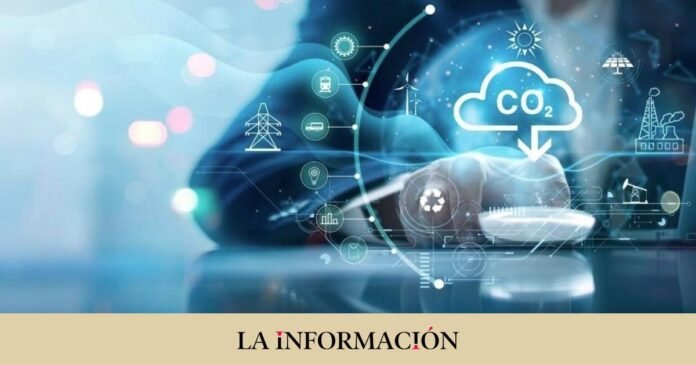The Great Reclusion of 2020 due to the Covid-19 pandemic had a historic decrease in the volume of CO2 emissions for the first time since they were measured on a regular basis, as a consequence of the closure of factories, confinements and the paralysis of transport and circulation of people. But the energy crisis of 2021 to 2022 has caused a rebound effect that is still ongoing that remains to be quantified. Countries like China, the US or the Europeans Germany and Poland have once again burned coal as they had not done in a long time to make up for the gas crisis caused by Russia.
Despite this, also for the first time in more than five years, the prices of global CO emission rights. According to the data consulted by ‘La Información’, the price of this ‘tax’ that taxes polluting emissions is standing at 78 euros per ton this January, 7% less than in the same month of 2021 and 8.7 % less than in December.
The collection of the Treasury with this toll will skyrocket in 2022 to 2,246 million euros for the auctions of CO2 emission rights, more than 1,000 million over 2021. It is the cost that the electricity industry pays for generating electricity with gas and other thermal sources such as, above all, coal. And it is that the price of CO2 has gone from having a symbolic price to multiplying in a matter of a few years. Taking the current level of 78 euros as a reference, and ignoring the one-year fall, the price shoots up 133% compared to January 2020, 220% since 2019 and up to 1,400% (15 times) from the 5 euros that were paid in 2016.
In a late 2022 report, Bank of America analysts discussed the question of re-carbonizing the economy as an unsustainable issue and how progress in the clean energy transition has suffered a severe setback in the near term. Among the key conclusions, the report highlights that CO2 emissions experienced the largest decline in history due to the pandemic, but with the economic reopening in 2021 and 2022, the effects of that decline have been neutralized.
China was the main driver of the increase, while the United States and the European Union also posted increases of 7% year-on-year. Within the Old Continent, countries like Germany or Poland have turned to coal as the main support for their electrical system due to the cut off of the Russian supply of natural gas, which in turn had replaced nuclear energy years ago. According to data released at the beginning of the year by the German government, CO2 emission rights brought Germany a record of 13,200 million euros of income through this route, almost six times more than Spain.
Bank of America analysts believe that in 2022 and 2023 the use of thermal energy will continue to grow, likely to “keep the planet on an unsustainable warming path.” The energy crisis in Europe is a double-edged sword for CO2, with very bad news in the short term and some hope in the medium term. In much the same way, China – also dependent on fossil energy – is doubling down on its efforts for decarbonisation, energy independence and security. Geopolitics have burst onto the scene after Russia’s invasion of Ukraine almost a year ago. For CO2, there are two direct effects.
“In the short term, the collapse of Russian gas exports and record prices have forced (electric) utilities to rely more heavily on coal-fired power generation, leading to increased emissions from the power sector. in 2022. In the medium term, the combination of very high and volatile prices for thermal fuels, together with new energy security risks, could accelerate investments in renewable energy”, conclude Bank of America experts.

